How Much Do a Jumper Pack to Crank a Car
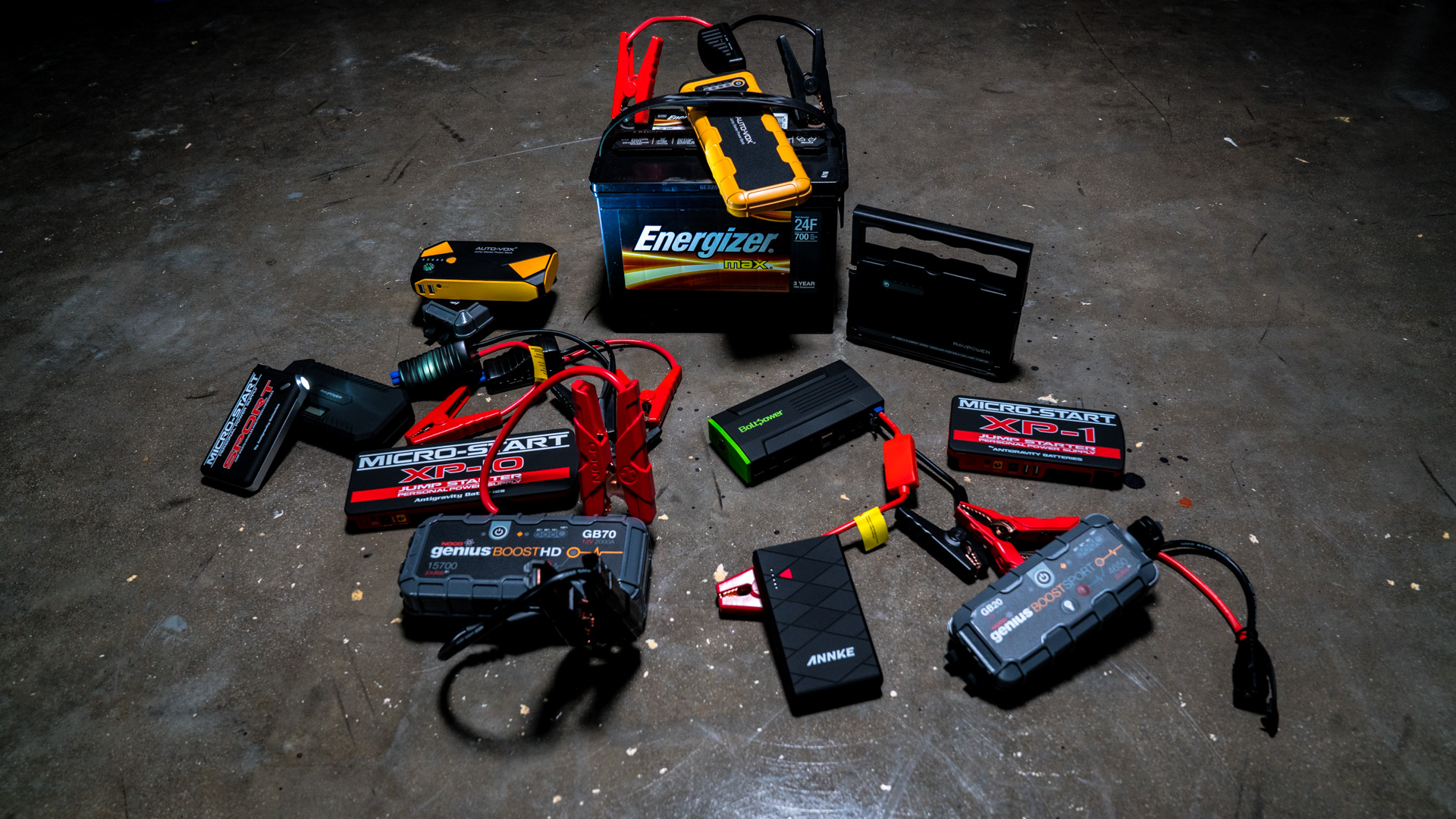
Getting stranded with a dead car battery is never a good time, and it's pretty commonplace for drivers to carry a set of jumper cables as a backup. If you don't fall into that group of prepared motorists, you likely will be calling a tow truck or AAA to give you a jump, wait the hour while they come around, and feel helpless in the meantime. A newer and even more practical solution to dead batteries has been picking up steam, in the form of compact jump starter power packs.
These intuitive gadgets don't require another car to be present to deliver an electrical lifeline, but store power until called upon and discharge a jolt to your battery to get you back on the road in no time. The biggest benefit to this solution is the practicality of it all, even if you are alone and out of cell range without traditional jumper cables of your own, you can still resolve the problem yourself.
Most of the portable jump starters have one or types of output ports in addition to the jumper cables, so you can utilize the power to charge any electronics you may be using without needing to have 12V power from your car. The ultimate distress would be finding yourself stuck with a dead battery and a dead phone, without a way to get help. This gives the jump starters a more practical use over the traditional cables, since those only serve one purpose.
Since these are super useful tools, and massively popular with those in the know, we rounded up some of the most popular jump starters to do an apples to apples comparison so you know what to consider when shopping for one yourself.
Important specs for choosing a jump starter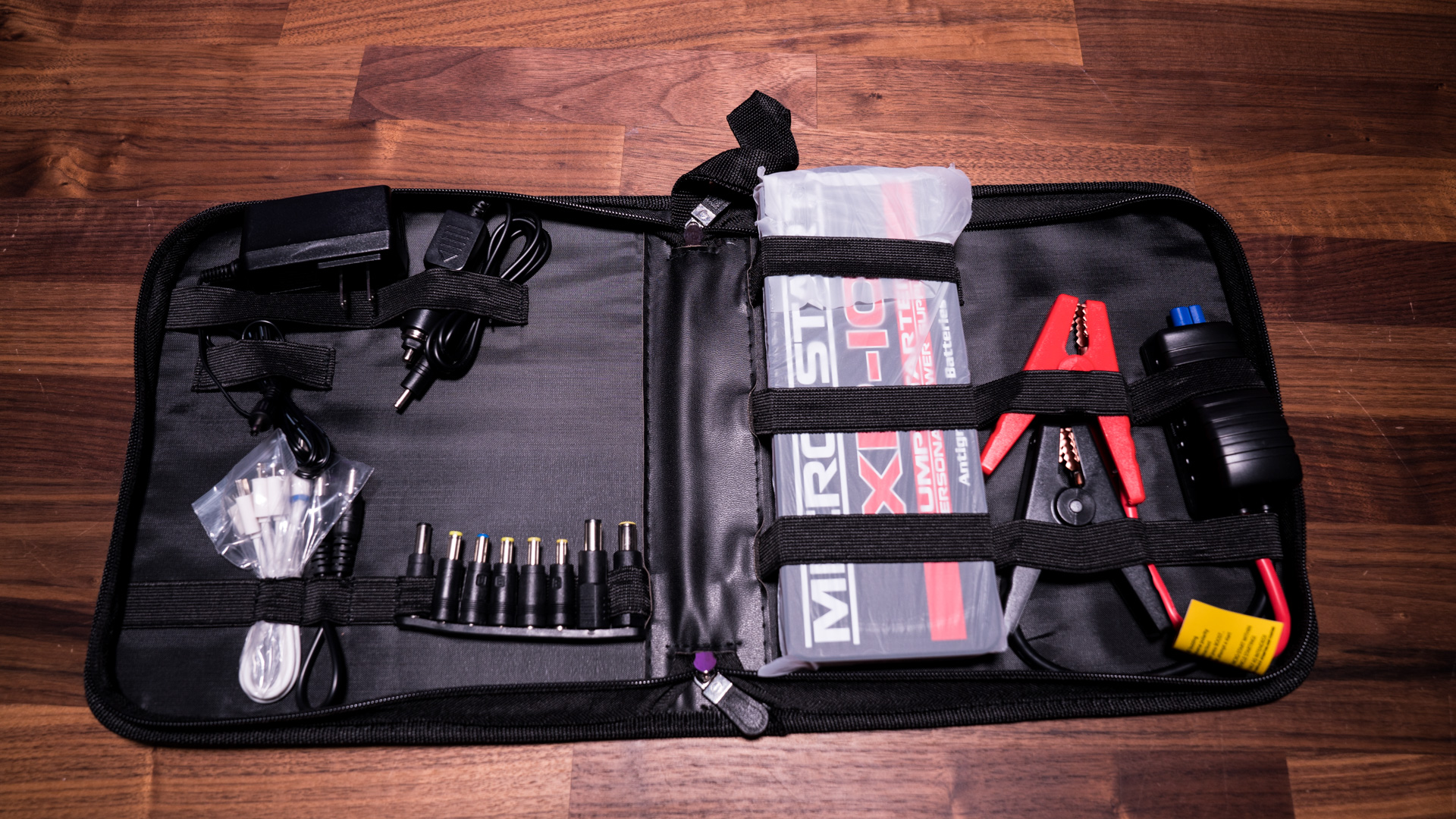
When shopping around for a jump starter, there are a few different specs that are important to consider, and some that are not as important and can be a bit confusing.
Jump starter power
Peak power numbers (amps in this circumstance) are frequently plastered all over electronics because they are higher and look more appealing to consumers. The higher the peak amps, the better the jump starter right? Wrong. Audio components, generators, and jump starters (among other devices) all have their peak power listed, when in actuality the starting power/ rated power/cranking amps are the more important metric to consider.
A battery's cranking amps (CA) refer to the amount of power that your battery can discharge for 30 seconds at 32° F, which is designed to start your vehicle. If you live in cold climates, you will need to pay attention to a battery's cold cranking amps (CCA), which is the number of amps a battery can pump out for 30 seconds at 0° F without dropping below 7.2 Volts. This means that you will need a higher rating of starting or cranking amps for cold weather, but the bottom line is that the peak power is not as important as the starting power.
Size of the jump starter
Since these portable jump starters are designed to be kept in a vehicle in case of emergency, an important factor to consider might be the size of the unit, depending on your vehicle situation. Generally new model jump starters are very compact, and all the jump starters we have here are smaller than a standard sheet of printer paper, however if you have a motorcycle or ATV there is even less space to work with.
Additional jumper features
Aside from the main purpose of providing a quick power source for your auto battery, most portable jump starters also function as power banks. This power rating is separate from the peak/crank power rating, and gives you an idea of how many other electronics you can charge on-the-go, or how many times you can power up between recharges. Other features such as additional charging ports are common, and it's standard to have a built-in flashlight with three modes (on, blink, and rapid strobe).
Most of the jump starters we rounded up here come with the alligator clamps, charger for the unit, and a variety of other connectors for either charging mobile devices or powering 12V electronics.
Build quality
More often than not your jump starter won't be subjected to drops and roughhousing on a regular basis, but the construction quality is something to consider when shopping for a jump starter. Finding yourself in a situation with a busted jumper is just as bad as not having one at all.
From the start, all the ones that we gathered up here feel pretty substantial and well put together. The units themselves have a good weight to them, and didn't feel as if they would be susceptible to breakage from normal use.
Another note about the jump starter build quality concerns the actual battery itself. Most are Lithium-ion, and some have multiple levels of safety certification. The most popular of these are CE, RoHS, UL, FCC, and CE. This may or may not be important to you depending on your price range.
Most popular jump starters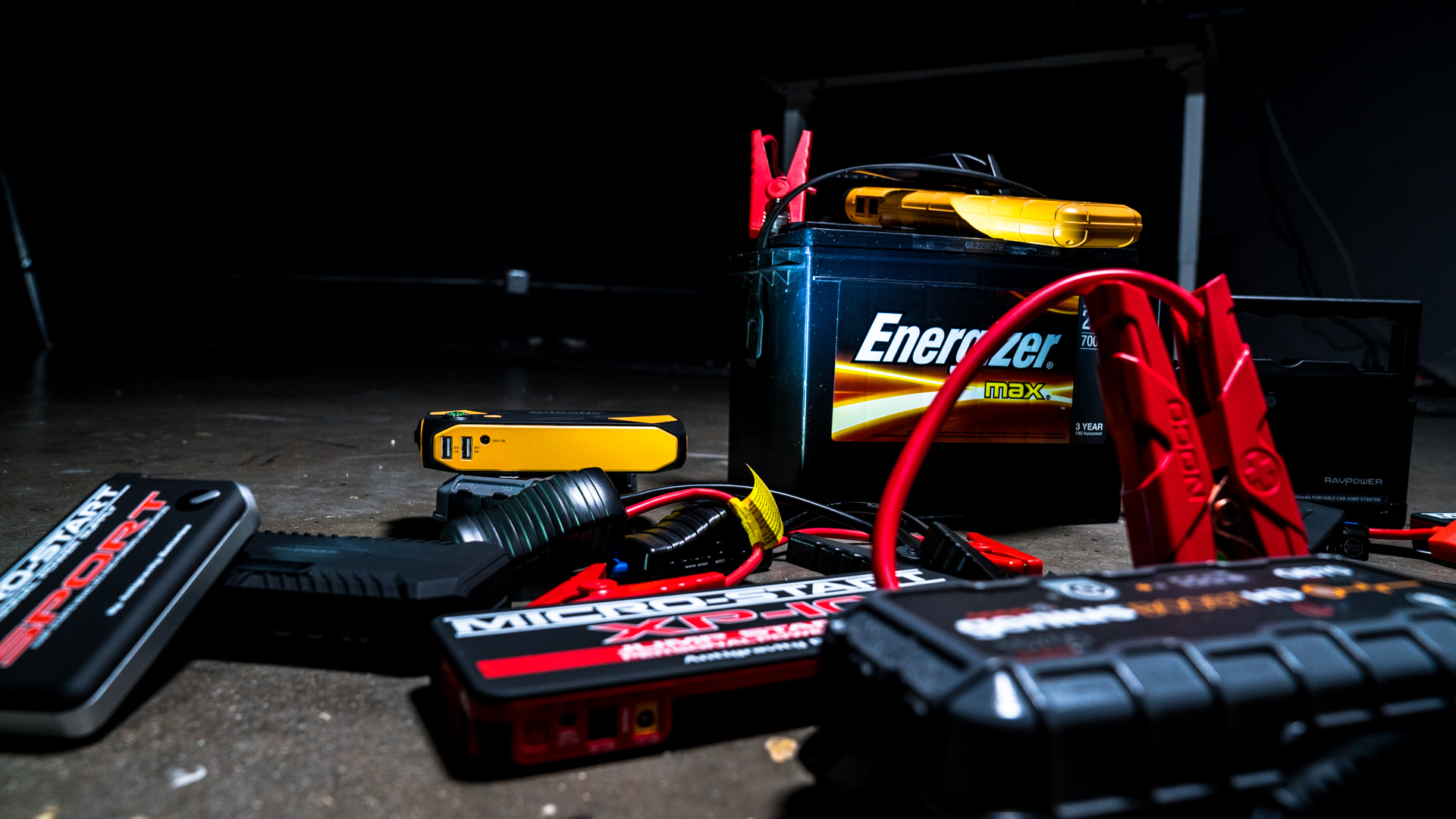
In no particular order, the following are our most popular jump starters with the specs laid out so you can do an easy comparison and find the right fit for your use. Each jumper will have the peak amps, starting power, power bank capacity, ideal engine size (from the manufacturer), additional features, size, and cost.
Bolt Power D29
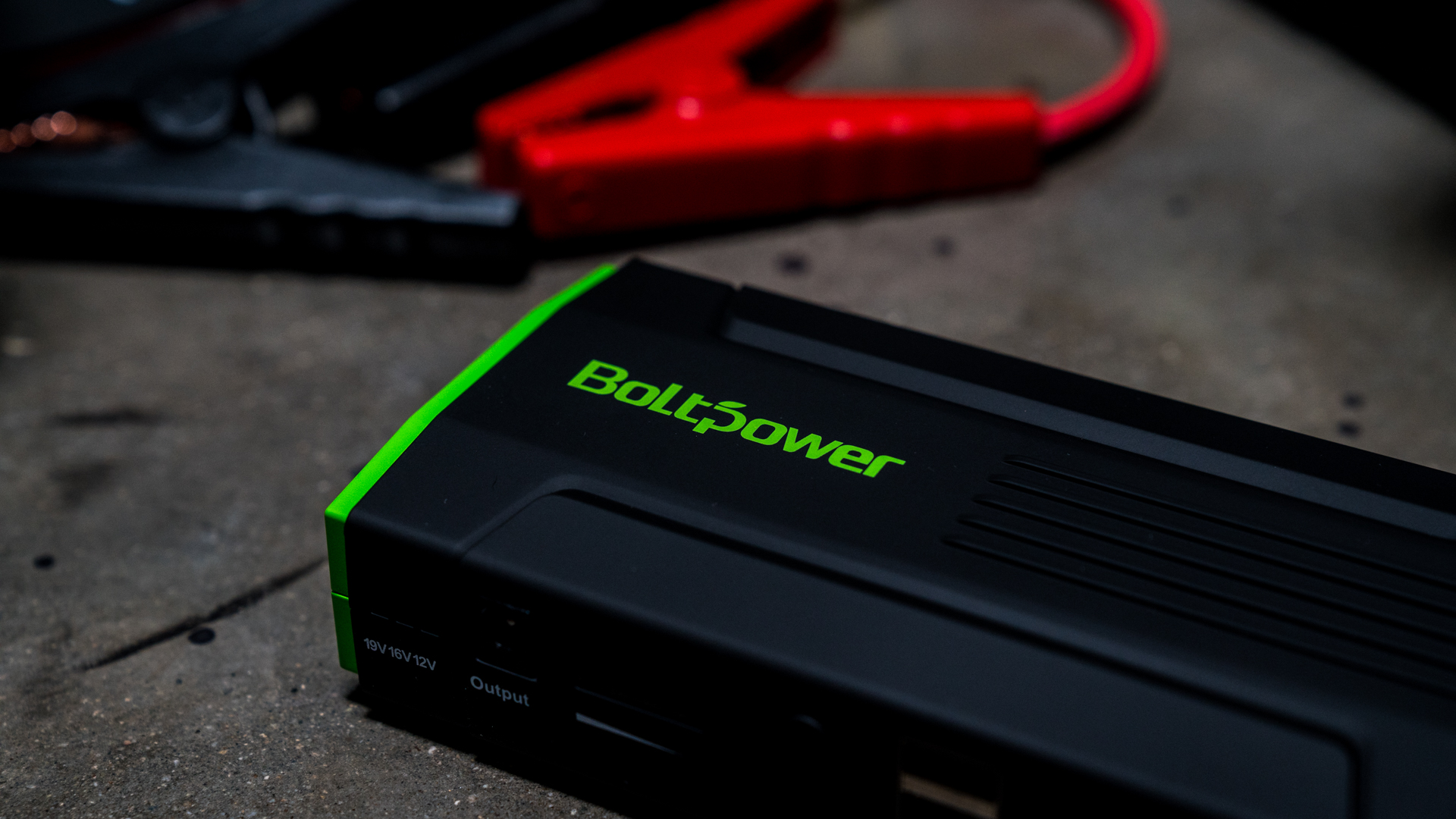
- 900A peak current
- 450A cold cranking amps
- 500A starting (cranking) current
- 18,000mAh power bank
- Dual USB 5V outputs (2.1A each)
- Recommended for gasoline engines up to 6.5L, diesel up to 4L
- Special features:
- Digital display for showing battery level, mode, and other information
- Cigarette port adapter so you can charge the unit on the road before needing to use it
- Reverse polarity protection
- 2" x 3.5" x 1.25"
- $69.99
Bolt Power D28A
- 500A peak current
- 200A starting current
- 13,600mAh power bank
- Dual 5V USB outputs
- 1A
- 1A
- Recommended for
- 5L gas engine with more than 15 jumps on a single charge
- 8L diesel more than 10 jumps on a single charge
- Special features:
- 12V Power output
- Included portable air compressor for topping off tires
- Universal laptop plug, with a slew of adaptors, voltage switching key
- 1,000 cycle lifetime
- 5" x 3.11" x 1.6"
- $64.99
Annke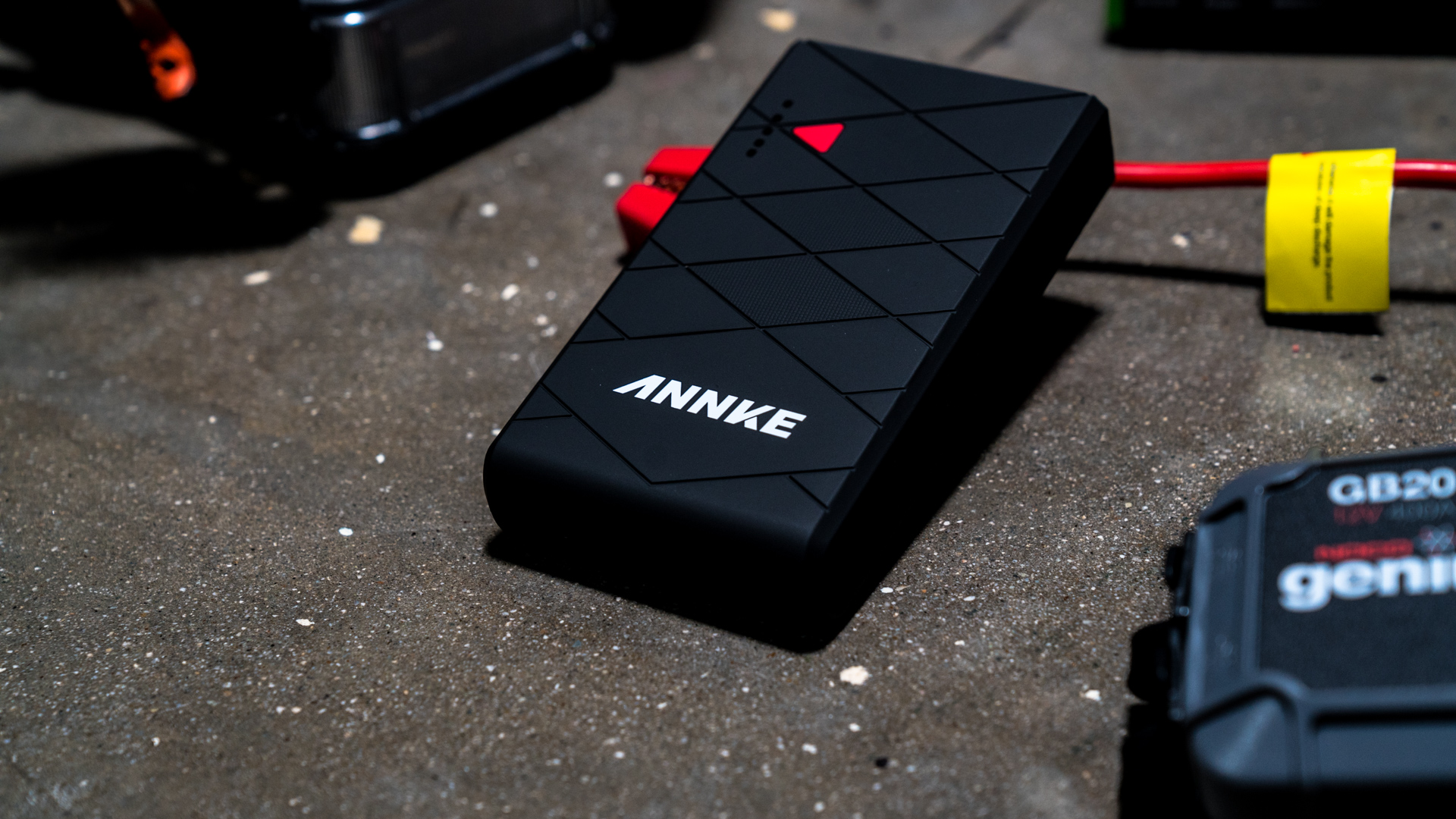
- 400A peak current
- 200A starting current
- 10,000mAh power bank
- Single 5V/1A USB output
- Recommended for 3.5L gasoline engines with more than 30 jumps on a single charge
- 1000 cycle lifetime
- 5"x3"x1"
- $32.99
Antigravity Batteries XP-10 Micro-Start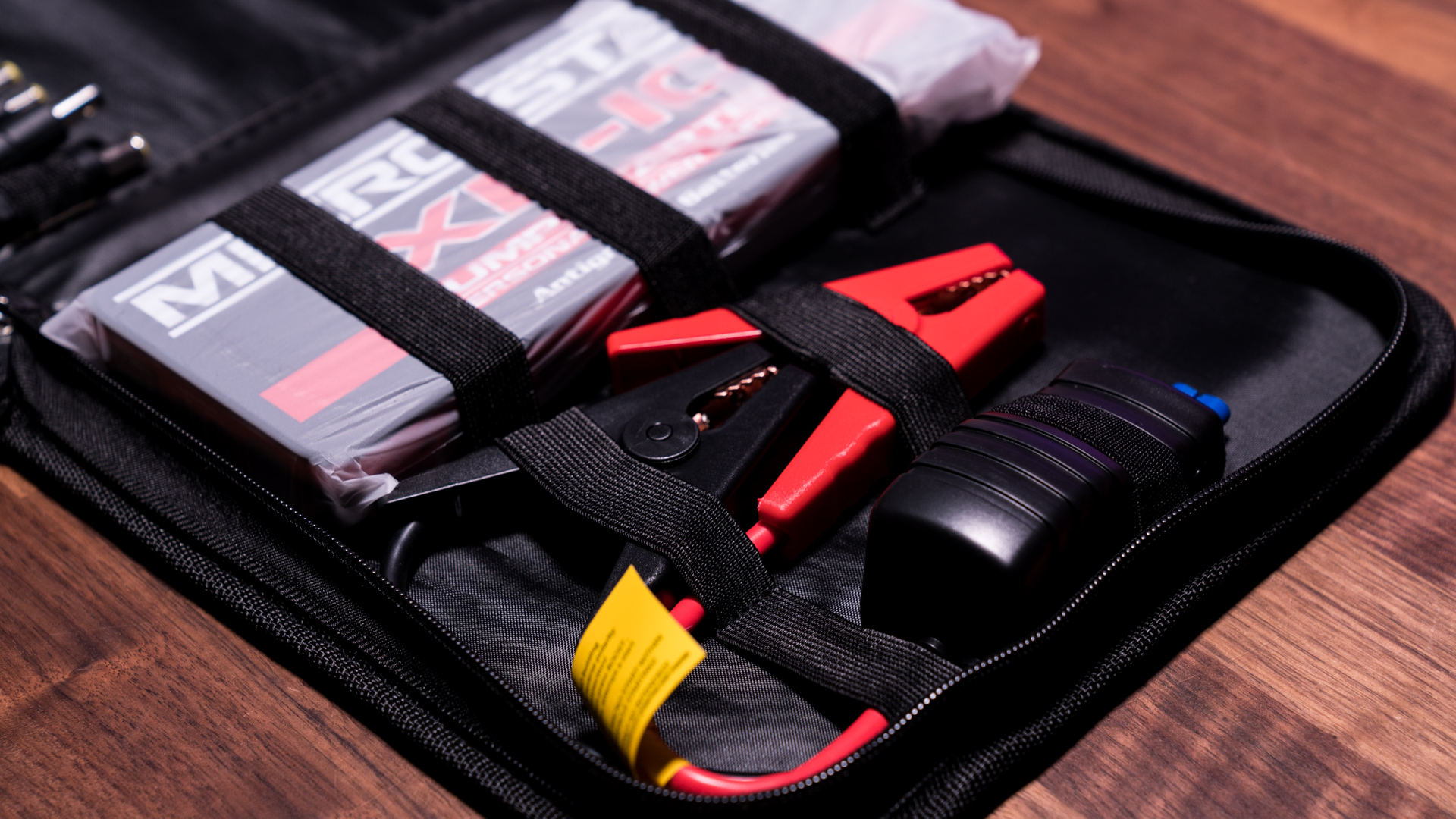
- 600A peak current
- 300A starting current
- 18,000mAh power bank
- Dual 5V USB ports (1A & 2.1A)
- Recommended for 7.3L gas engines and 8L diesel engines
- Special features:
- Over-charge, over-discharge, reverse polarity, short circuit protections
- UL listed
- 19V & 12V ports
- 9" x 3" x 1.25"
- $154.99
Antigravity Batteries XP-1 Micro Start 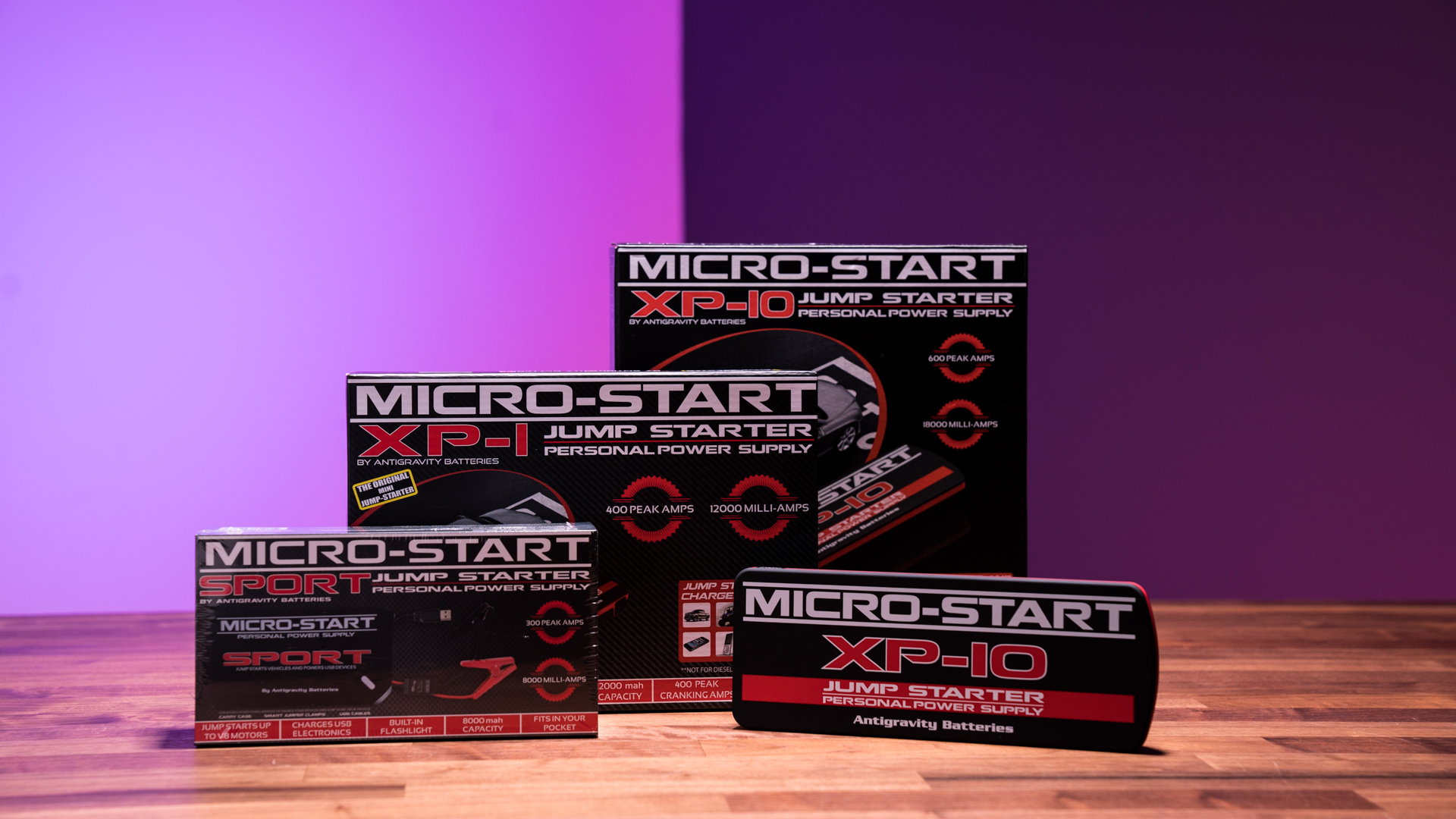
- 400A peak current
- 200A starting current
- 12,000mAh power bank
- Dual 5V USB ports (1A & 2.1A)
- Recommended for 6L gasoline engines with 25 jumps on a single charge
- Special features:
- 19V & 12V ports
- Over-charge, over-discharge, reverse polarity, short circuit protections
- UL listed
- 6" x 2.8" x 1"
- $120
Antigravity Batteries Sport Micro Start
- 300A peak current
- 150A starting current
- 7,500mAh power bank
- Recommended for 5L gasoline engines
- 5" x 2.8" x .875"
- $84.99
AUTO-VOX P2 
- 500A peak current
- 250A starting current
- 14,000mAh power bank
- Dual 5V USB ports (1A & 2A)
- Up to 15 jumps on one charge
- Special features:
- Protection from over-charging, over-discharge, over-temperature, reverse polarity, reverse charge, and short circuit.
- Built-in compass, lifespan of 3,000 charges
- Recommended to charge every 3 months
- 4" x 3.2" x 1.2"
- $80
AUTO-VOX P1 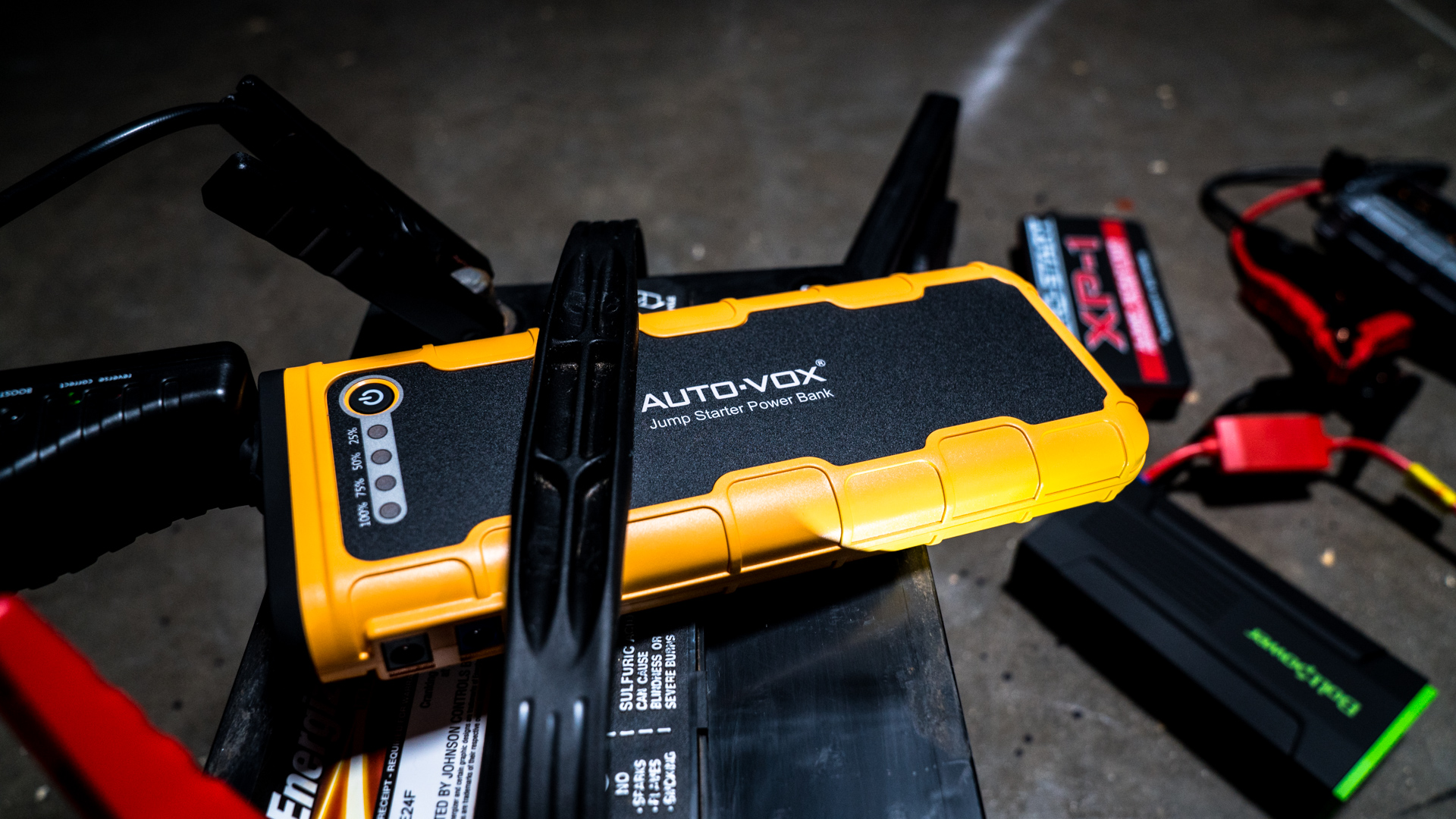
- 600A peak current
- 300A starting current
- 18,000mAh power bank
- Dual 5V USB ports (1A & 2 A)
- Recommended for 7.5L gasoline engines or 6.5L diesel engines
- Up to 20 jumps on a single charge
- Special features:
- Protection from over-charging, over-discharge, over-temperature, reverse polarity, reverse charge, and short circuit.
- Lifespan of 3,000 charges
- Recommended to charge every 3 months
- 5" x 3.25" x 1"
- $100
RAVPower
- 550A Peak current
- 14,000mAh power bank
- Dual iSmart USB ports 2.1A
- Recommended for up to 5L gasoline engines or 3L diesel engines
- Up to 20 jumps on one charge
- iSmart is the RAVPower classification for the safety features they include in their units
- This has warning and protection for short-circuit, reverse polarity, high temperature, low voltage, reverse connection, over charging, jump current control and protection module
- 7" x 3.3" x 1.4"
- $49.99
RAVPower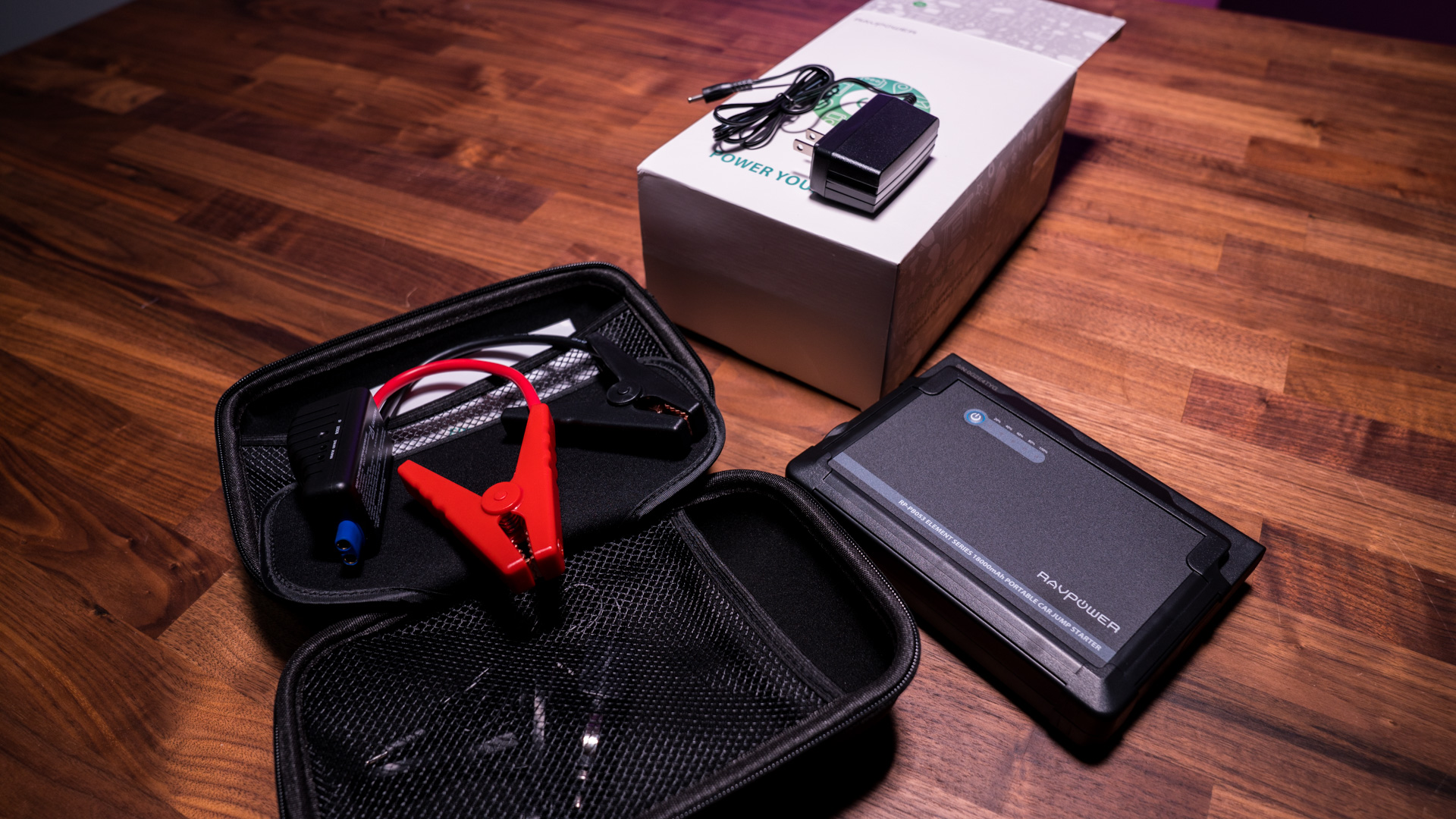
- 600A peak current
- 18,000mAh power bank
- Dual iSmart USB ports 2.1A
- Recommended for:
- 6L gas up to 20 jumps on one charge
- 3L diesel up to 20 jumps on one charge
- Special features:
- Cigarette lighter charger
- Use to provide power for 20W-120W devices from the cigarette lighter plug, without having the car on (or even near the vehicle). You can also power mini travel fridges, air inflators, GPS, or other electronics
- Lifespan is 2000 recharges
- Cigarette lighter charger
- Out of all the previous models, this one has the largest/strongest flash light beam
- $59.99
NOCO Genius Boost Sport GB20 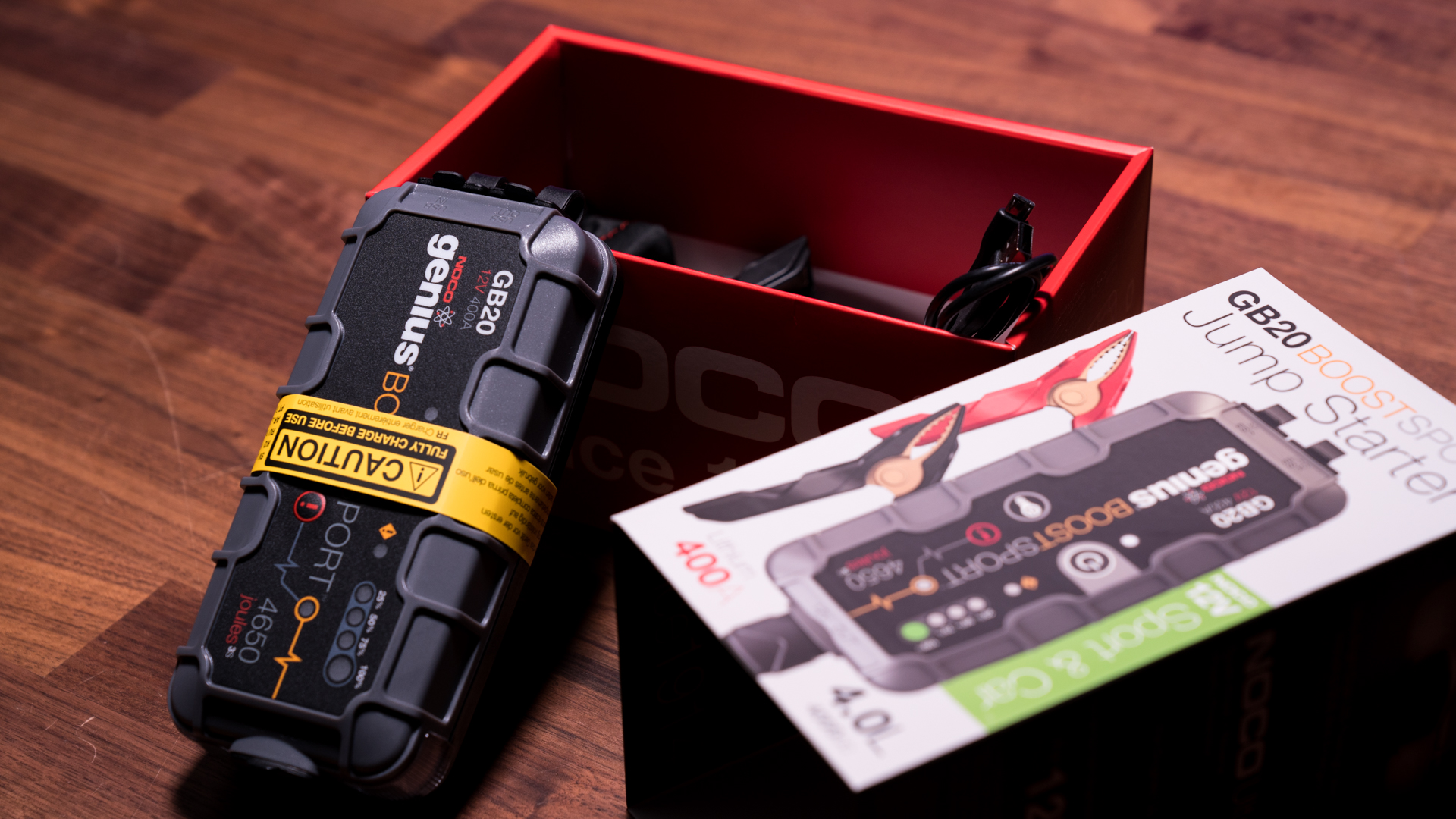
- 400A peak current
- 4,560 Joules starting power (over 3 second duration) * unlike the other brands, instead of using a crank or starting amperage rating NOCO uses the Joules of starting power over a 3 second duration to measure this.
- USB 2.1A output, Micro USB 2.1A input
- Recommended for:
- 4L gasoline, up to 20 jumps on a single charge
- Not recommended for diesel motors
- Special features:
- Can hold charge up to a year
- Lifetime of 1,000 cycles
- Thermal sensors, power management processors, reverse polarity protection
- Flashlight is 100 lumen dual LED with seven light modes
- You can manually override internal protections for deeply discharged batteries
- The NOCO has a beefy design, with thick cables. They went with a needle-nose design on the lower rated model, for smaller applications like ATVs or motorcycles for harder to reach areas
- $80
NOCO Genius Boost Plus GB40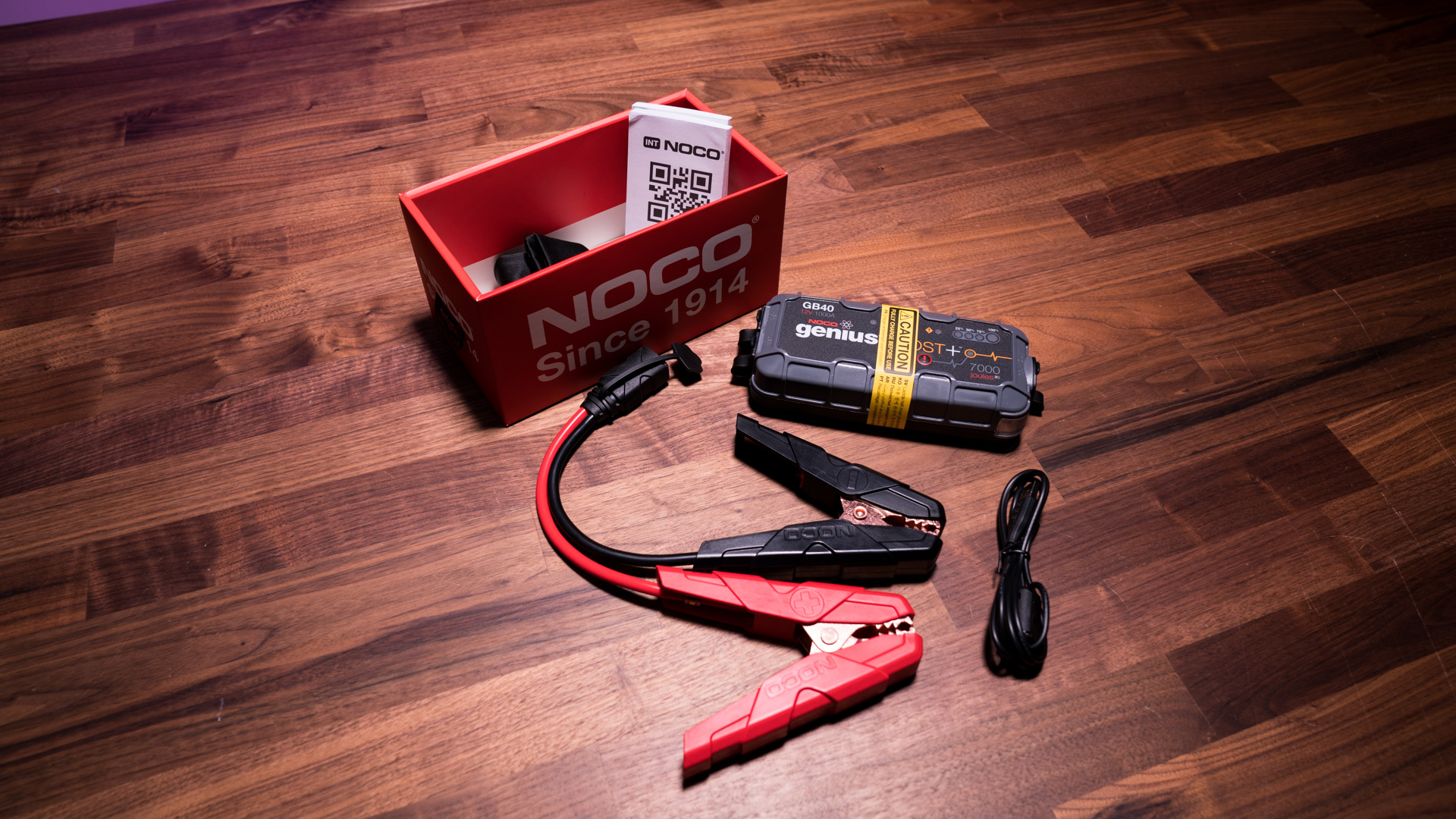
- 1,000A peak current
- 7,000 Joules starting power (over 3 second duration)
- USB 2.1A output, Micro USB 2.1A input
- Recommended for 6L gasoline engines or 3L diesel engines with up to 20 jumps on one charge
- Special features:
- Can hold charge up to a year
- Lifetime of 1,000 cycles
- Flashlight is 100 lumen dual LED with seven light modes
- You can manually override internal protections for deeply discharged batteries
- 7" x 3.2" x 1.7"
- $100
NOCO Genius Boost HD GB70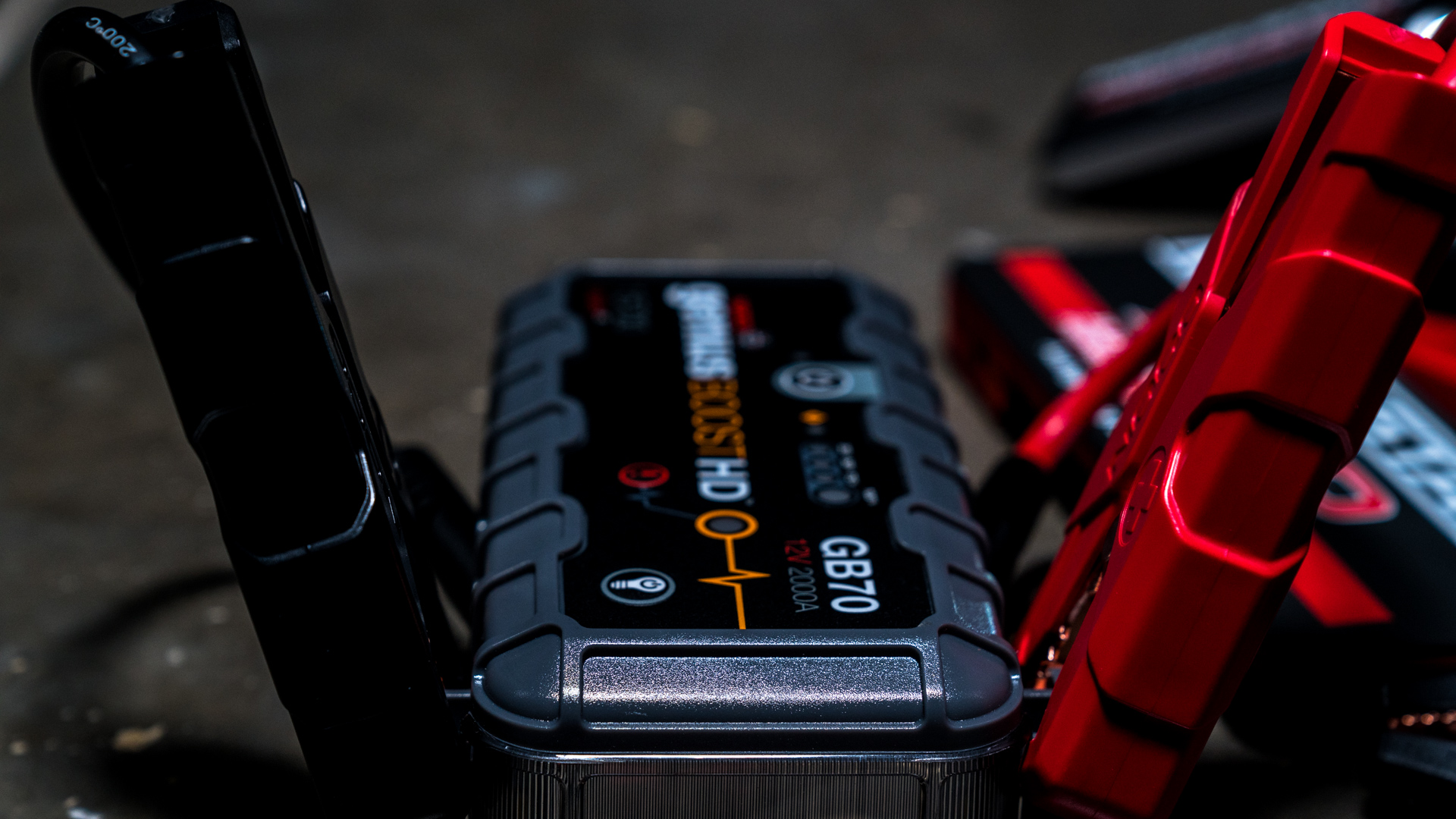
- 2,000A peak current
- 15,700 Joules starting power (over 3 second duration)
- USB 2.1A output, Micro USB 2.1A input
- Recommended for up to 8L gasoline engines, 6L diesel engines with up to 40 jumps on one charge
- Special features:
- The 8-LED flashlight is rated at 400 lumens, and has 7 lighting modes while all the others have 3. NOCO dedicated and entire side of the unit to this, and also integrated multiple luminosity modes
- Beefy design, thickest cables and most heavy-duty clamp design out of the bunch
- 8" x 6" x 2.8"
- $120
More to know about jump starters
The one difference that stands out in the physical design of all the jump starters is that the Bolts, Annke, Antigravity, RAVPower, and AUTO-VOX all were designed to look like power banks. They have a rubberized finish (aside from AUTO-VOX and RAVPower's larger model which is plastic), all are pretty compact, have one LED in the flashlight, and many have multiple USB outlets.
The NOCO units weren't designed to look like power banks, and it would seem that their focus was more on the utility of jumping the vehicle over having multiple USB ports. The design is not nearly as compact, sleek, or flashy, and you certainly wouldn't be carrying one around in your pocket as strictly a mobile power backup. The NOCO cables are much thicker gauge, and the clamps have a more heavy-duty construction. Something to note about dead batteries in general is that below 25% charge most cannot be re-charged or jumped, and will require replacement.
Also, I should note that these were not tested for current, or in the field jumping a dead battery. The stats listed are based on manufacturer claims, but stay tuned for more of that testing in the future.
Featured in this article
Bolt Power D29– $69.99
Bolt Power D28A-$64.99
Annke-$32.99
Antigravity Batteries XP-10 Micro-Start-$154.99
Antigravity Batteries XP-1 Micro Start-$120
Antigravity Batteries Sport Micro Start-$84.99
AUTO-VOX P2-$80
AUTO-VOX P1-$100
RAVPower (550A)-$49.99
RAVPower (600A)-$59.99
NOCO Genius Boost Sport GB20-$80
NOCO Genius Boost Plus GB40-$100
NOCO Genius Boost HD GB70-$120
How Much Do a Jumper Pack to Crank a Car
Source: https://www.newegg.com/insider/jump-starter-guide-important-specs/
0 Response to "How Much Do a Jumper Pack to Crank a Car"
Post a Comment